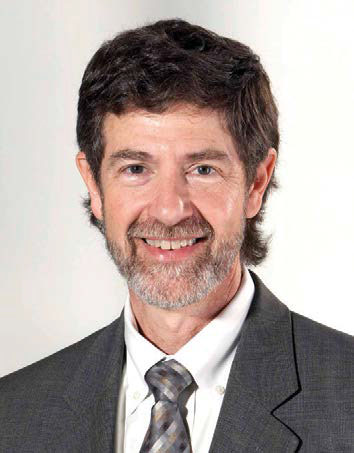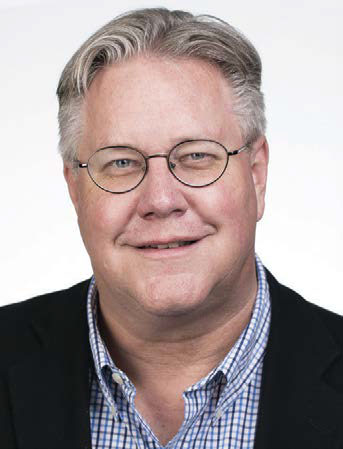Storage: Hybrid, Holistic and What’s in Between
SAN FRANCISCO—Blame the advanced need for speed, the reality of our 24/7 always-on news cycle or simply escalating costs, and the industry finds itself at a crossroads: stick with stalwart storage legacy technologies of the past? Or invest in something new. But which road to take?
While the “hybrid” technology moniker has been been stamped on everything from cars to refrigerators (built-in TV with your snack, anyone?), the hybrid technology signature has found its way to the storage realm, and with good reason.
Hybrid technologies, say both system integrators who work with the technologies and the manufacturers who develop them, offer a few key plusses: efficiency, scalability, reliability and the ability to handle high-traffic storage requirements.

Dave Van Hoy, president of Advanced Systems Group‘BEST IN CLASS’
“Today hybrid storage comes up in the world of media and entertainment because there are many storage technologies out there and no one storage technology can be best-in-class for all of the different use cases,” said Dave Van Hoy, president of Advanced Systems Group (ASG), a system integration firm headquartered in Emeryville, Calif. “And so that has led to a lot of hybrid workflows.”
Is mixed SSD the right choice, or spinning disk? “You really have to look at your applications to figure out what to use where. If I have an application that I am going to write once and read many times, SSDs are fabulous. But SSDs have other trade-offs; they’re fairly expensive compared to disk. And also they have lifecycle limitations.
“Whereas spinning disk gives you huge economy of scale, but if you want to make it fast, you offload to help out the disk,” he said.
And this is where you can end up with these hybrid workflows, according to Van Hoy.
Get the TV Tech Newsletter
The professional video industry's #1 source for news, trends and product and tech information. Sign up below.

Dave Frederick, senior director, Media & Entertainment, Quantum That thinking went into some of today’s current hybrid storage technologies. The hybrid storage system from Quantum, known as QXS, denotes right off the bat that the technology is a hybrid solution combining flash and disk to lower both operating and capital costs. The family of QXS hybrid systems all tout a feature known as “intelligent data tiering,” which works to keep the most requested data in the highest performance tier. “For media and entertainment applications, hybrid storage gives users a system that can handle random I/O and support small-file workflows, such as animation and special effects, at a much lower cost than an all-flash array,” said Dave Frederick, senior director, Media & Entertainment at Quantum in San Jose, Calif.
A ROUTE TO LONG-TERM PROTECTION
Facilis also saw the benefit in taking the SSD/disk route. The company’s hybrid storage ofering, the TerraBlock Hybrid24, combines high-speed SSD drives with traditional spinning hard disk technology in a single enclosure. From a single unit, broadcast and post organizations have the ability to access high-speed storage for 4K workflows while also having collaborative multi-seat shared storage for more traditional HD editorial.
That ability—to be able to access high-speed storage—was a priority for Tribune Creative Services, which is part of the Chicago Tribune Media Group. The group recently added 4K Ultra HD production capabilities to beef up its ability to create high-quality content in house and archive content.
“We looked around, but no-one else could offer even the basic requirement of connecting to copper as well as Fibre without a workaround,” said Mason Pierce, senior video producer at Tribune Creative Services. Tribune’s current workflow supports both Fibre and copper gigabit Ethernet connectivity.
A HOLISTIC APPROACH
Creating a holistic approach to archiving was the goal of the Dternity, a deep storage solution from Fujifilm that uses tape media, onsite network storage and online vaulting. The system uses LTFS standards to provide a file- and project-based workflow in which files can be dragged and dropped into the Dternity NAS or can be moved via VPN into the Dternity Media Cloud.
Keeping tabs on that storage through Dternity—and being able to access it as quick as a flick of a hockey stick— was a priority for the production team for the Los Angeles Kings, whose video-production arm, Kings-Vision, produces original content for the video boards in the cavernous Staples Center and for online dissemination.
“Over the last five years we’ve seen the amount of data that we’re generating just explode, with HD and 4K and all these other new formats,” said Rob McPherson, manager of production for the Los Angeles Kings. “Now we’re shooting and generating 30 to 35 TB of brand new content that needs to be archived.”
Hybrid can also be defined another way: in the mix of on-premise and off-premise storage, ASG’s Van Hoy said. “Again, it’s about mixing technologies so we get the best of return on investment … except now you’re looking at a hybrid of what I need to have on premise—which is about performance—and what do I want to have off premises, which is usually about cost.”
MIX AND MATCH
It’s a word that you’ll hear again and again, and there’s good reason for that. Improving workflow, workflow, workflow—is a key benefit within systems like the XStreamEFS shared storage platform from EditShare.
“[The technologies are] offering customers immense versatility in the face of challenging technology and market changes,” said Martin Bennett, director of marketing at EditShare in Watertown, Mass. “Our solutions allow clients to leverage the best the cloud has to offer along with traditional on-premise solutions.”
The newest version of the EditShare EFS XStream Shared Storage platform also touts a mix-and-match platform. EFS allows users to mix and match high performance SSD, performance-optimized HDD, and cost-optimized HDD nodes in different combinations.
According to the company, XStream EFS is the first storage system to allow users to dynamically define the combination of storage technology and file protection that is applied to media and project spaces. This allows users to optimize storage technology and file protection for each step in their post-production workflow.

Avid NEXISINTELLIGENT STORAGE
Also making the leap into intelligent storage options is Avid. The company’s new NEXIS solution is being called intelligent storage for real-time media production because of its ability to scale and connect to other Avid MediaCentral Platform applications. By enabling—again—a mix-and-match set up of engines, users can form virtual pools of storage to streamline, expand, and accelerate workflows, the company said.
One of the key goals was to build a storage solution that can grow with a company at each stage of its business, the company said.
The system is also a scale-out storage solution that allows users to configure it to give high-priority projects more power. “You can give critical projects maximum performance and throttle back on less critical workflows,” said Tom Graham, a marketing manager with Avid in Burlington, Mass.
LINKING ARMS
Other hybrid solutions are linking arms with storage technologies to offer a similar kind of advantage.
Two hybrid SaaS solutions from Signiant include Media Shuttle and Signiant Flight, which are both solutions that can be used to accelerate the movement of large digital assets. The Media Shuttle hybrid SaaS solution, for one, allows media professionals to transfer any size file and store files either on-premises or in cloud object storage, while Flight is an companion auto-scaling SaaS utility system that helps to accelerate the transfer of large data sets to either Amazon S3 Cloud Object storage or Microsoft Azure.
This kind of “hybrid software as a service” solution, teamed with a storage option, is a benefit due to the freedom it offers customers in choosing their own storage types or vendors.
Susan Ashworth is the former editor of TV Technology. In addition to her work covering the broadcast television industry, she has served as editor of two housing finance magazines and written about topics as varied as education, radio, chess, music and sports. Outside of her life as a writer, she recently served as president of a local nonprofit organization supporting girls in baseball.

